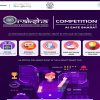Educators update student report card writing for the digital era learning
Student report cards, once simple handwritten documents sent home at the end of term, have evolved into comprehensive digital tools that provide detailed insights into academic performance. As schools continue to adopt digital systems, report card writing is being reshaped to support efficient data management, secure communication and personalised learning.
Security as a priority
With report creation and sharing increasingly online, safeguarding student information has become essential. Password-protected PDFs allow teachers to share grades, attendance details and other sensitive information only with authorised recipients. This ensures confidentiality while streamlining communication between schools and families.
Cost and resource efficiency
Digital report cards reduce the need for printing, physical storage and distribution. Schools save on paper, ink and labour costs, while also eliminating repetitive administrative work. Teachers can customise reports with charts, graphs and personalised comments without incurring additional resource demands. After initial training, ongoing costs remain minimal.
Immediate access to performance data
Storing records online gives students and parents instant access to grades, teacher feedback and performance history from any device. Multimedia options such as video feedback allow deeper communication between teachers and families. Handwriting-to-text tools also support the digitisation of legacy reports or handwritten comments, ensuring consistent and legible documentation.
Reduced administrative workload
Digital systems enable administrators to generate, organise and distribute reports with a few clicks. Integration with legacy databases automates attendance and grade compilation, reducing manual errors. This allows teachers to focus more on teaching and student engagement rather than administrative tasks.
Use of data analytics
Online reporting systems allow teachers to analyse performance data over time. Trends in participation, subject-wise progress and attendance can be identified more easily. Predictive analysis tools can highlight potential challenges early, enabling timely interventions and support for students.
Integrating portfolios into reports
Digital platforms allow report cards to be linked with student portfolios containing project work, written assignments and multimedia submissions. This provides a more holistic view of student development beyond grades alone and strengthens communication between school and home.
Challenges in implementation
Despite the benefits, digital report cards present challenges. Technical issues, lack of training and varying levels of digital literacy can slow adoption. Schools must invest in user-friendly systems, training programmes and ongoing technical support. Equitable access also remains a concern, as not all families have reliable devices or internet connectivity. Alternatives such as school-based kiosks or printed versions help ensure inclusion. Data protection measures, including encryption and regular audits, are critical to maintaining trust.
Strengthening digital data management
As digital tools become more embedded in education, institutions must continue updating their processes to remain effective. By adopting secure, accessible and efficient digital reporting systems, schools can support better communication, reduce workloads and provide clearer insights into student learning.
Also Read: CyberPeace & NCERT host 5th edition of eRaksha on ‘AI for Peace & Safety’
















Add comment